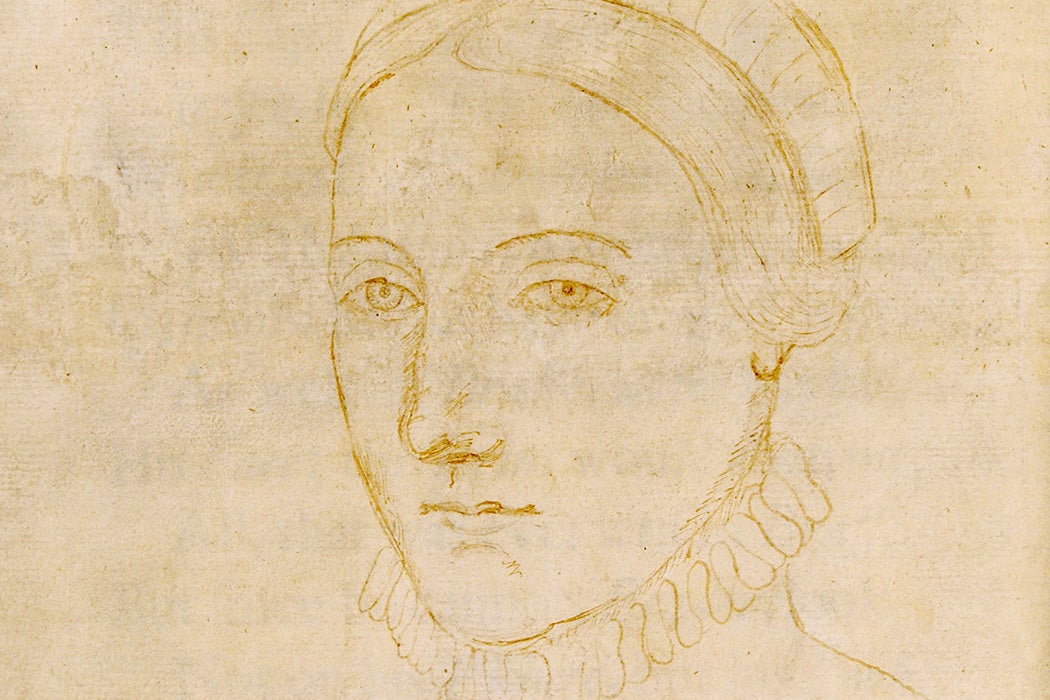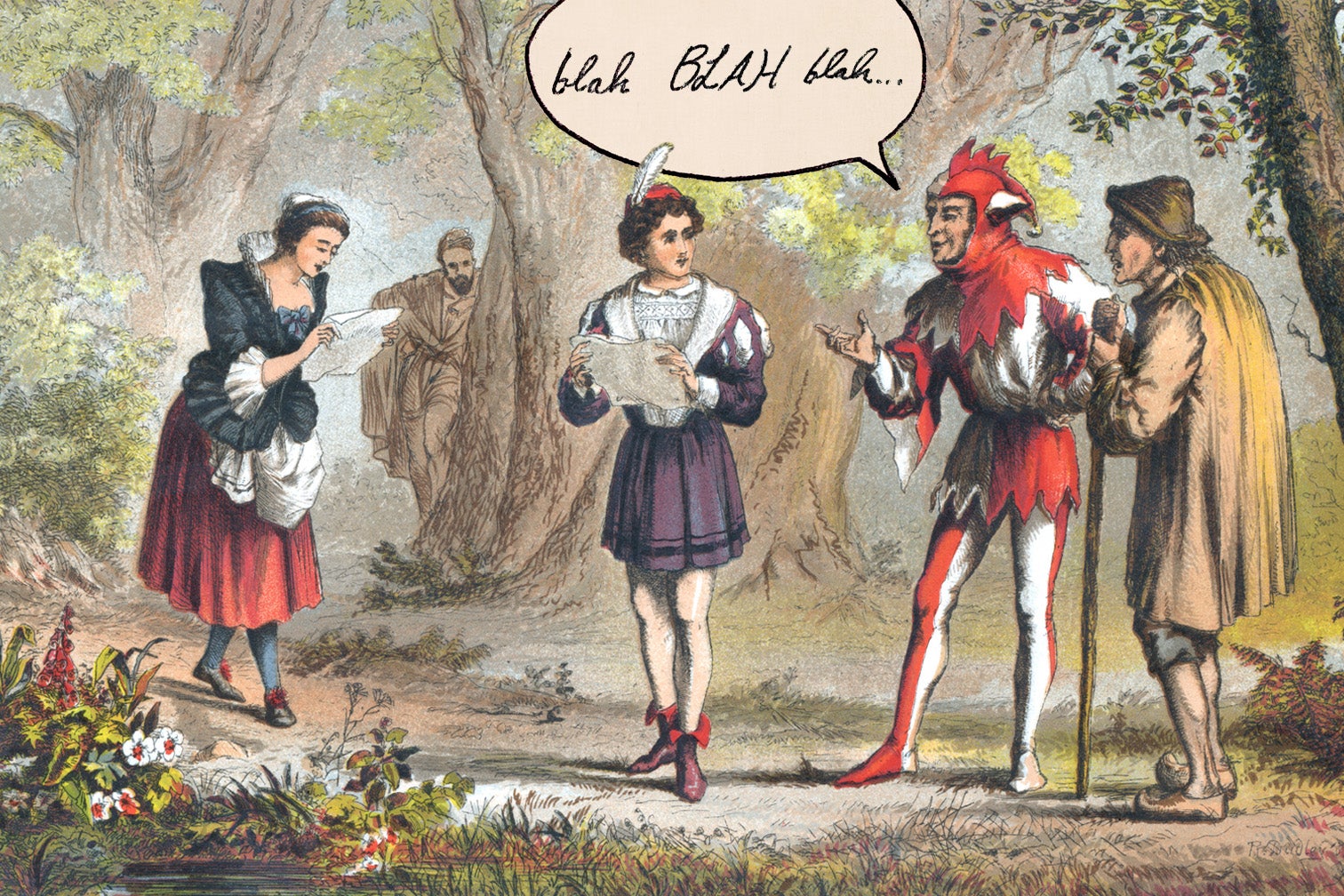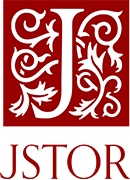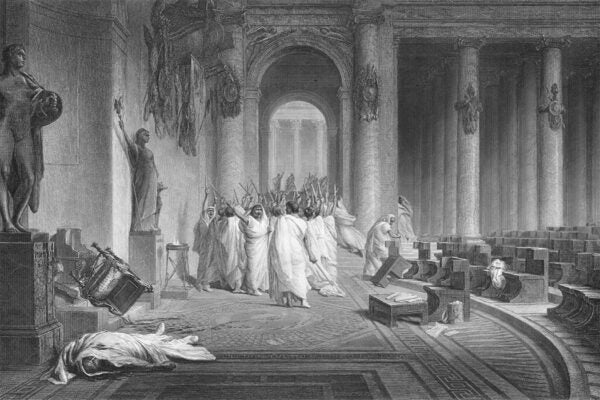There’s no end to conjectures about William Shakespeare’s life because there isn’t all that much definitive Shakespeareana to rake over. This is one of the reasons for the old joke, “Who wrote Shakespeare?” asked by partisans of the likes of Christopher Marlowe, Francis Bacon, or the Earl of Oxford, touting their man instead of a relatively obscure son-of-a-glover from Stratford.
Shakespeare’s name, in various spellings, only “appears on just over one hundred documents created during his lifetime,” notes Lena Cowen Orlin.
Two of these documents are a marriage license and a marriage bond. They give different names for the woman Wm Shaxpere/William Shagspere married. The November 27, 1582, marriage license names “Annam [Anne] Whateley.” The marriage bond, dated November 28, lists “Anne Hathwey.” What’s up with this? Did the first clerk make a mistake in his dog Latin after too many butts of hock the night before? Was the second Anne the second-best Anne? Was it a last-minute shotgun (crossbow?) marriage? Anne Shakespeare gave birth to Susanna Shakespeare six months later. Not so unusual, that, as almost one in three late-sixteenth-century British women married while pregnant; Anne being twenty-six was also not so unusual.
If not a whole lot is known about William Shakespeare, even less is known about Anne Hathaway Shakespeare (to use the modern spelling). So, how do you write about Anne’s life? Given the scant hard facts, Orlin approaches Anne’s biography by indirection, analogues, and “evidence clusters.”
“Is it possible to make biographical meaning from scattered references that seem so intractably trivial?” she asks. “Here I turn to another evidence-mining strategy, searching for cognates. While Shakespeare’s life was otherwise unexampled in Stratford, for that of his wife there are analogues.”
More to Explore
Are We Getting Shakespeare’s Rhythms All Wrong?
One of these parallel lives is that of Elizabeth Quiney. The Quiney and Shakespeare families were close. Richard Quiney, Elizabeth’s husband, wrote the only surviving letter addressed to William Shakespeare (perhaps preserved because it was never sent). Elizabeth and Richard’s son Thomas married Anne and William’s daughter Judith. The Quineys are unusually well represented in the records.
Elizabeth Quiney couldn’t write and “probably could not read with facility,” writes Orlin, yet she was at the center of a kinship network that combined a large household (of “sixteen persons” in 1595) and varied business interests. She was a malt-maker, property owner/rent-collector, mercer (retailing a wide-range of non-local goods), grocer, licensed vintner, and money-manager. She also acted as her government-busybody husband’s deputy while he was off politicking in London and hosted civic events for him in Stratford.
Anne Shakespeare, too, “certainly ran a household,” Orlin writes. Like Elizabeth, she may also have been a malt-maker (this was considered women’s work) and likely brewed beer at home. There’s no evidence Anne purveyed goods like Elizabeth, but she was a civic hostess. She was also undoubtedly a landlord: the Shakespeare holdings included several tenanted properties. She was definitely a lender and borrower; members of the middling classes like the Shakespeares and the (better-off) Quineys scrambled “to balance earnings and expenses,” taking on debt with one hand and making loans with the other. (Richard’s possibly unsent letter to William was a request that William borrow £30 on Richard’s behalf: “You shall friend me much in helping me out of all the debts I owe in London.”)
Weekly Newsletter
In sum, Orlin argues that the slim direct and larger contextual evidence shows Anne was
a businesswoman of substance. And this, in turn, helps us explain another aspect of William Shakespeare’s story that has haunted many biographers. How could he have afforded shares in the Globe? Purchased New Place and other properties in Stratford? The tithes? The Blackfriars gatehouse? Perhaps the answer lies with Anne, his partner in a two-earner marriage.
For more on the primary sources left behind by the Shakespeares and their contemporaries, check out Orlin’s 2021 book, The Private Life of William Shakespeare.
Support JSTOR Daily! Join our membership program on Patreon today.








